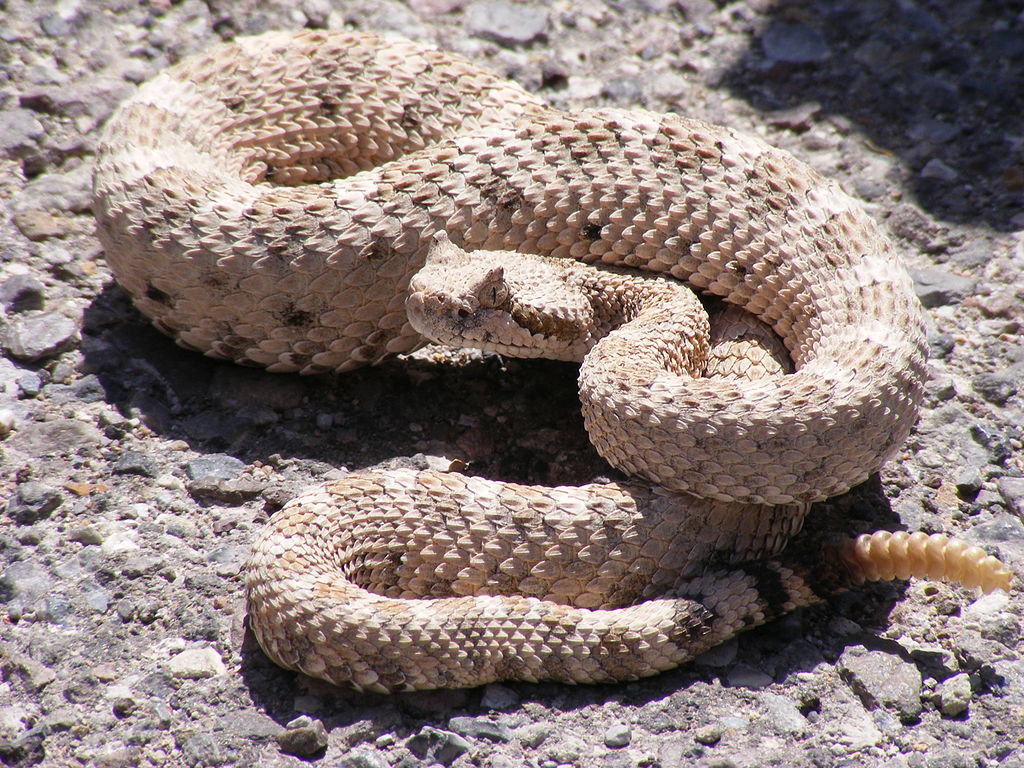The animal kingdom never ceases to amaze us with its remarkable adaptations and peculiar movements. Among these fascinating creatures is the sidewinder rattlesnake, a marvel of evolution that has developed a unique sideways locomotion resembling a crab’s sideways scuttle. This distinctive movement isn’t just for show – it’s a specialized adaptation that allows these serpents to navigate some of Earth’s most challenging terrains. As we explore this remarkable reptile, we’ll discover how its unusual sidewinding motion represents one of nature’s most ingenious solutions to the problem of moving efficiently across loose, shifting sands where conventional slithering would be ineffective.
The Sidewinder: Nature’s Desert Specialist
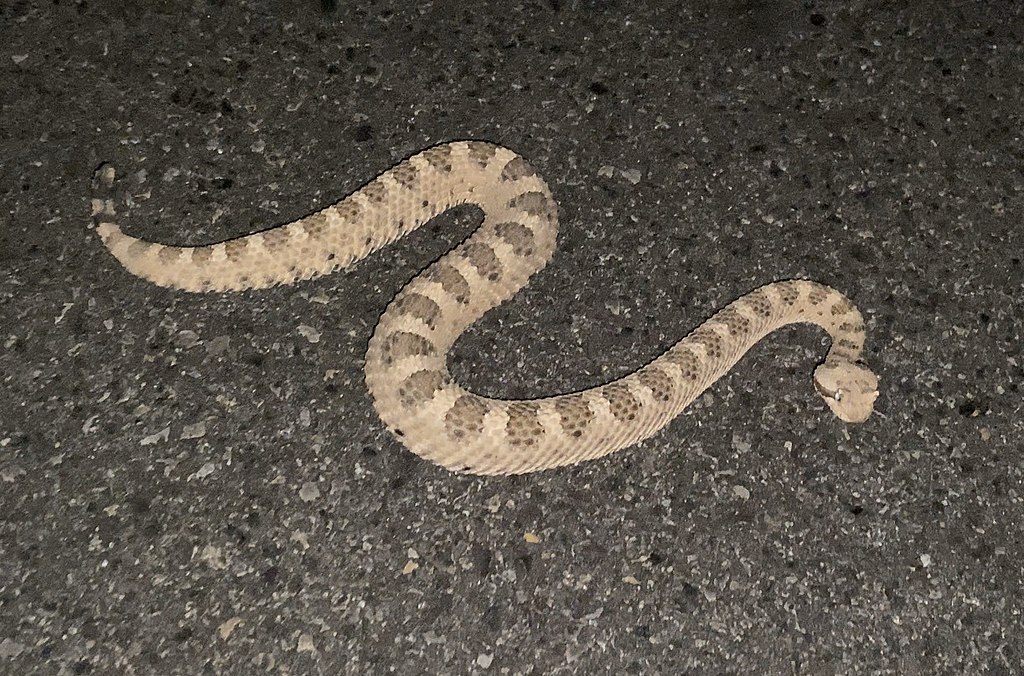
The sidewinder rattlesnake (Crotalus cerastes) belongs to the pit viper family and is primarily found in the deserts of the southwestern United States and northwestern Mexico. This small to medium-sized venomous snake typically grows to about 1.5-2.5 feet in length, making it relatively compact compared to many other rattlesnake species. Its most distinctive physical features include the raised, horn-like scales above each eye (supraocular scales) that give it the alternative name “horned rattlesnake.” These specialized adaptations, combined with its sand-colored camouflage patterning, make the sidewinder perfectly suited to life in its harsh desert environment where temperatures can fluctuate dramatically between scorching days and cool nights.
The Mechanics of Sidewinding
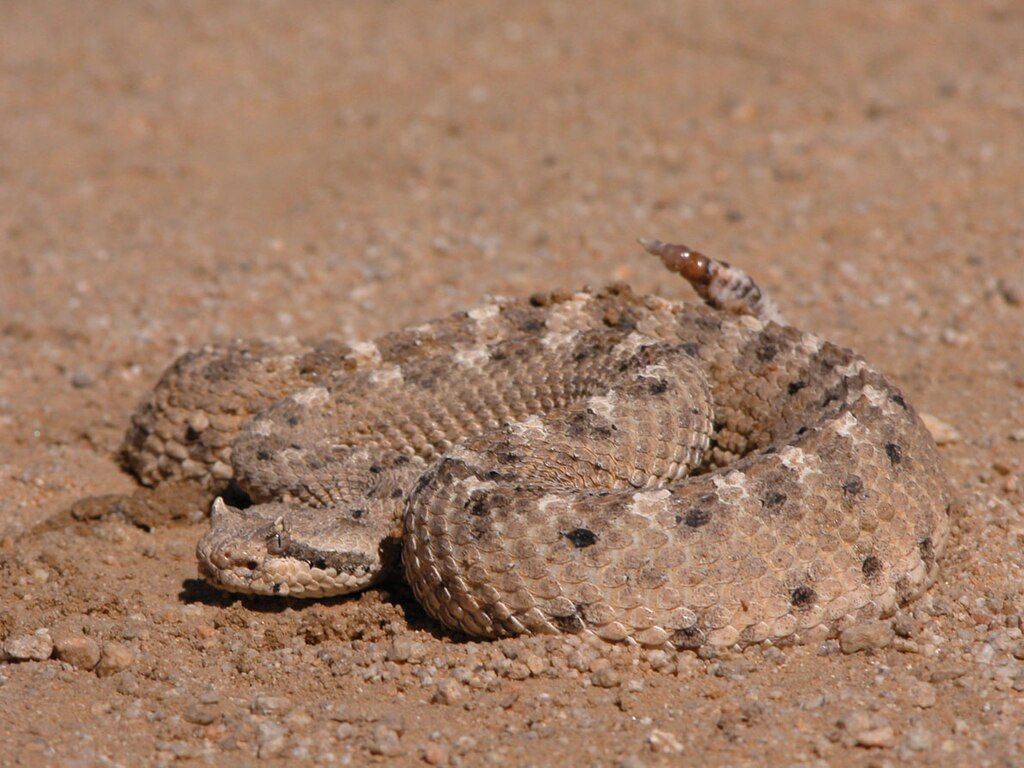
Sidewinding is a remarkable form of locomotion that involves the snake moving its body in a series of J-shaped curves, with only two points of its body touching the ground at any given time. This creates the distinctive diagonal tracks that appear as a series of parallel dashes or lines in the sand, rather than the continuous S-shaped trail left by conventionally slithering snakes. As the sidewinder moves, it launches portions of its body forward while maintaining minimal contact with the hot sand surface. This specialized locomotion allows the snake to travel at speeds up to 18 miles per hour in short bursts, making it one of the fastest snakes relative to its size. The sidewinding motion is so efficient that robotics engineers have studied and attempted to replicate it in desert-navigating robots.
Evolutionary Advantages of Sidewinding
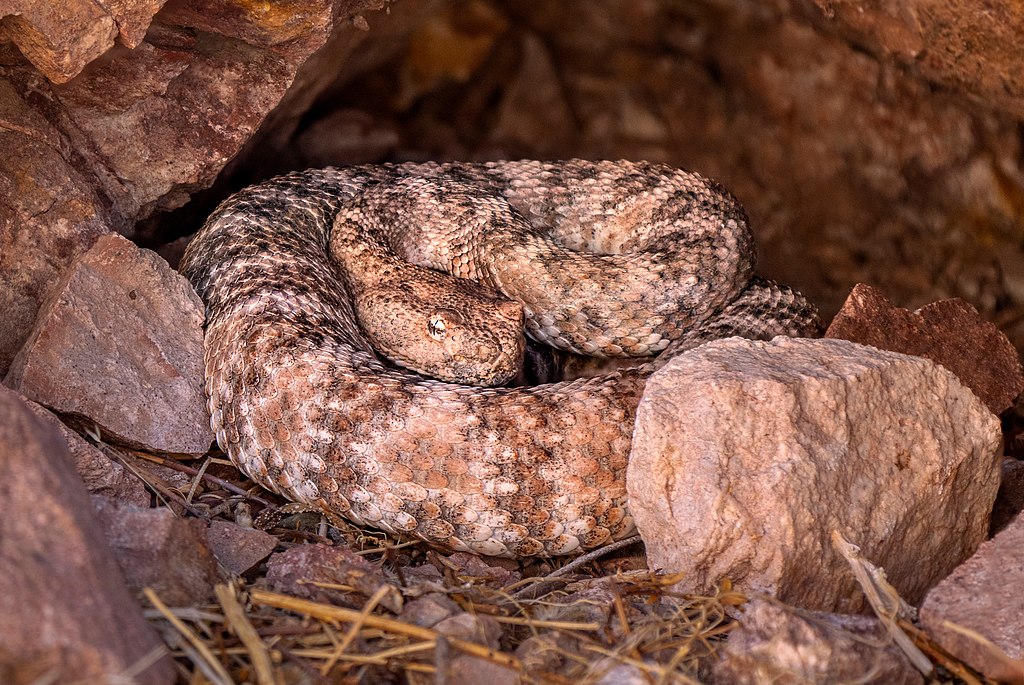
The sidewinder’s unusual movement pattern represents a brilliant evolutionary adaptation to the challenging desert environment. By minimizing contact with the scorching sand, which can reach temperatures exceeding 160°F (71°C) during summer days, the snake reduces heat absorption and prevents burns to its scales. The sidewinding motion also provides superior traction on loose, shifting sand where traditional slithering would cause the snake to sink or lose momentum. This adaptation allows the sidewinder to move with approximately 30% less energy expenditure than typical snake locomotion would require in the same conditions. Additionally, this unique movement pattern helps the snake avoid leaving a continuous trail that predators might follow, adding an element of predator avoidance to its list of evolutionary advantages.
Not Just for Deserts: When Other Snakes Sidewind
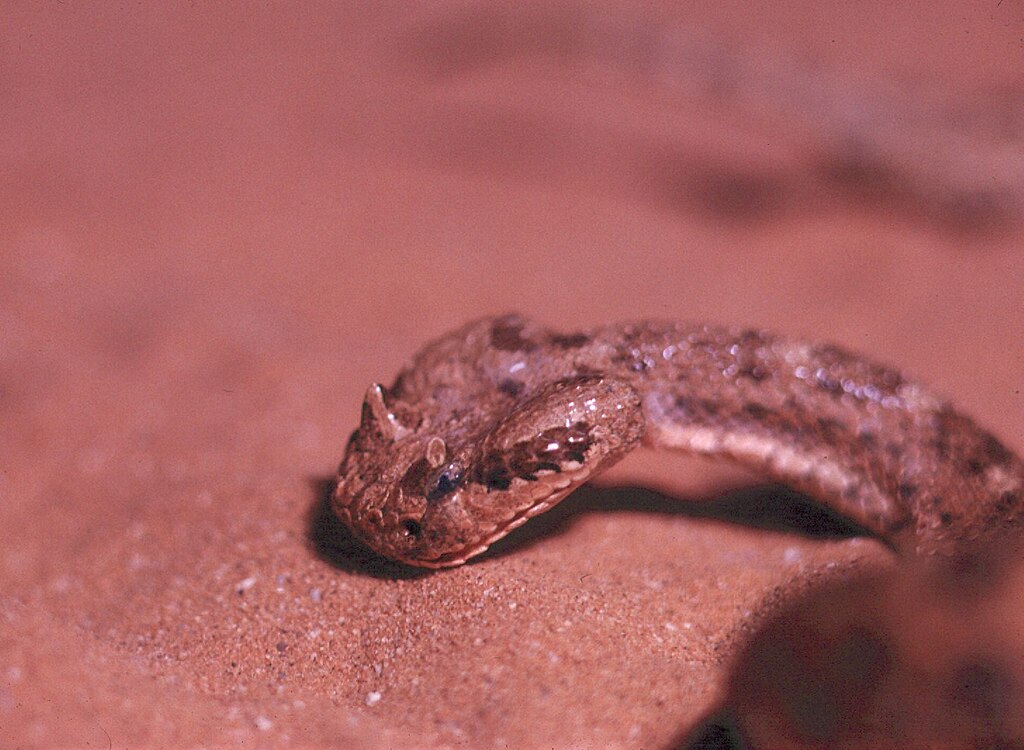
While the sidewinder rattlesnake is the most famous practitioner of this unusual locomotion, it isn’t the only snake that employs this technique. Several other species, including the Saharan horned viper (Cerastes cerastes) and the Namib Desert viper (Bitis peringueyi), have independently evolved similar sidewinding abilities in response to similar environmental pressures. Even snakes not typically associated with sidewinding, such as certain cobras and other vipers, may occasionally use this locomotion method when traversing particularly loose or unstable surfaces. This convergent evolution across different snake species on separate continents demonstrates how powerful environmental pressures can drive the development of similar adaptations in unrelated organisms. The fact that sidewinding has evolved multiple times independently underscores its effectiveness as a movement strategy in challenging terrains.
Desert Camouflage and Concealment
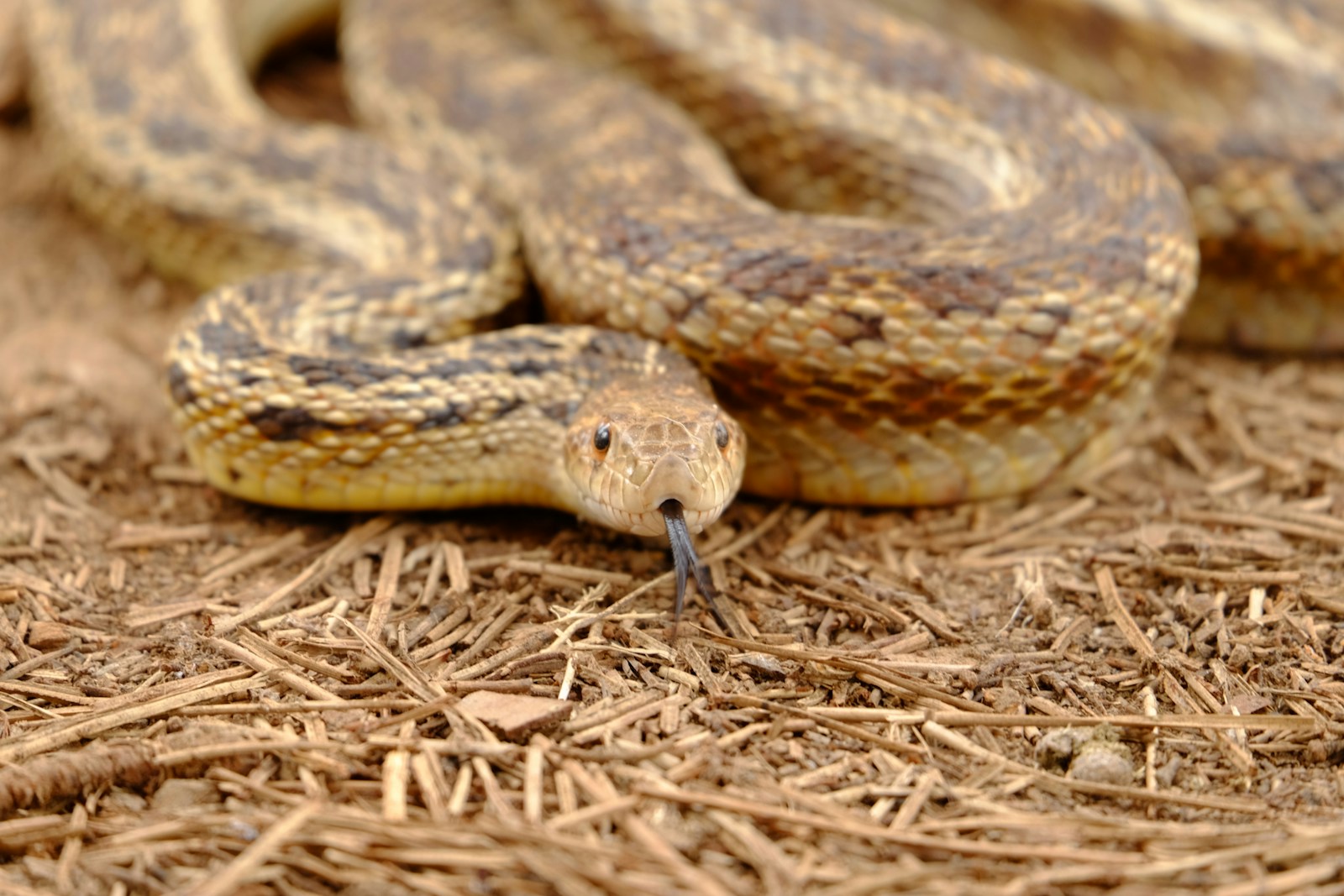
The sidewinder’s ability to move sideways is complemented by exceptional camouflage adaptations that help it blend seamlessly into its desert surroundings. These snakes typically display a pale coloration ranging from light tan to creamy yellow that closely matches the desert sands of their native habitat. Their bodies feature darker geometric blotches or diamond patterns that break up their outline and further enhance concealment. When stationary, sidewinders often perform a behavior called “partial burial,” where they use sidewinding motions to quickly submerge most of their body beneath the sand, leaving only their eyes and nostrils exposed. This combination of cryptic coloration and burial behavior allows them to remain virtually invisible to both prey and predators, demonstrating how their sidewinding ability serves multiple survival functions beyond mere locomotion.
Hunting Strategies and Prey Capture
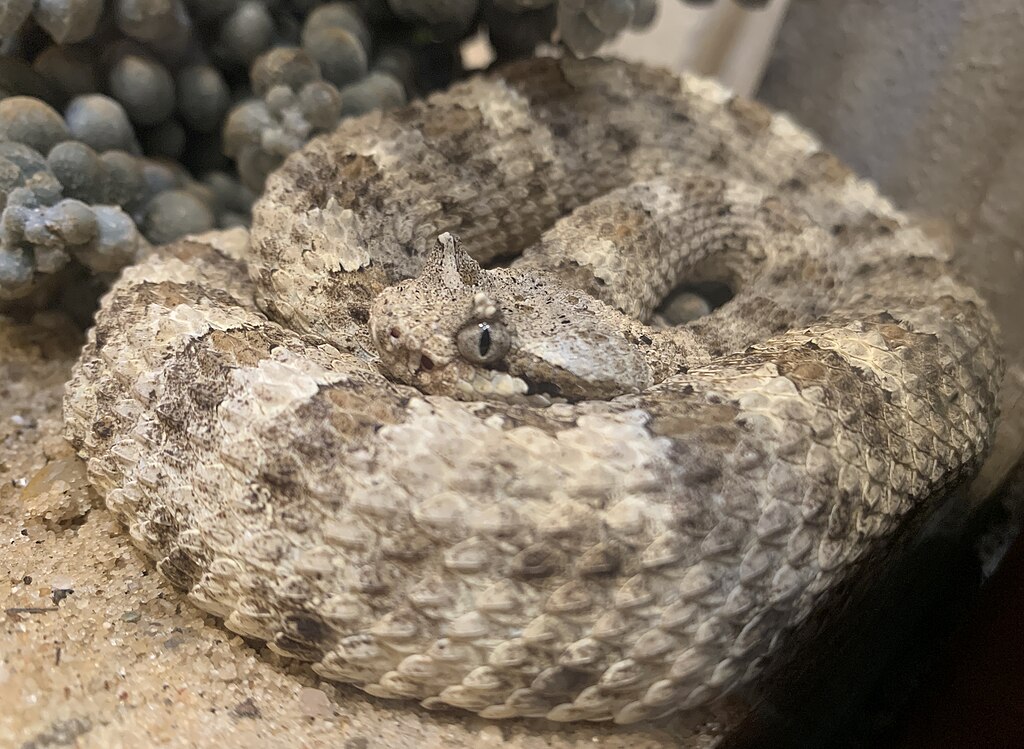
The sidewinder’s unique method of movement plays a crucial role in its hunting strategy, allowing it to stealthily approach prey across open desert terrain. These snakes are primarily nocturnal hunters, emerging after sunset when temperatures drop and their warm-blooded prey becomes more active. Using heat-sensing pits located between their eyes and nostrils, sidewinders can detect the infrared radiation emitted by potential prey, even in complete darkness. Their diet consists mainly of small desert rodents such as kangaroo rats, pocket mice, and other small mammals, though they will also consume lizards when opportunity permits. After locating prey, the sidewinder employs its rapid sidewinding motion for the final approach, then strikes with remarkable speed, injecting venom that quickly immobilizes its victim before consumption.
Specialized Adaptations Beyond Locomotion
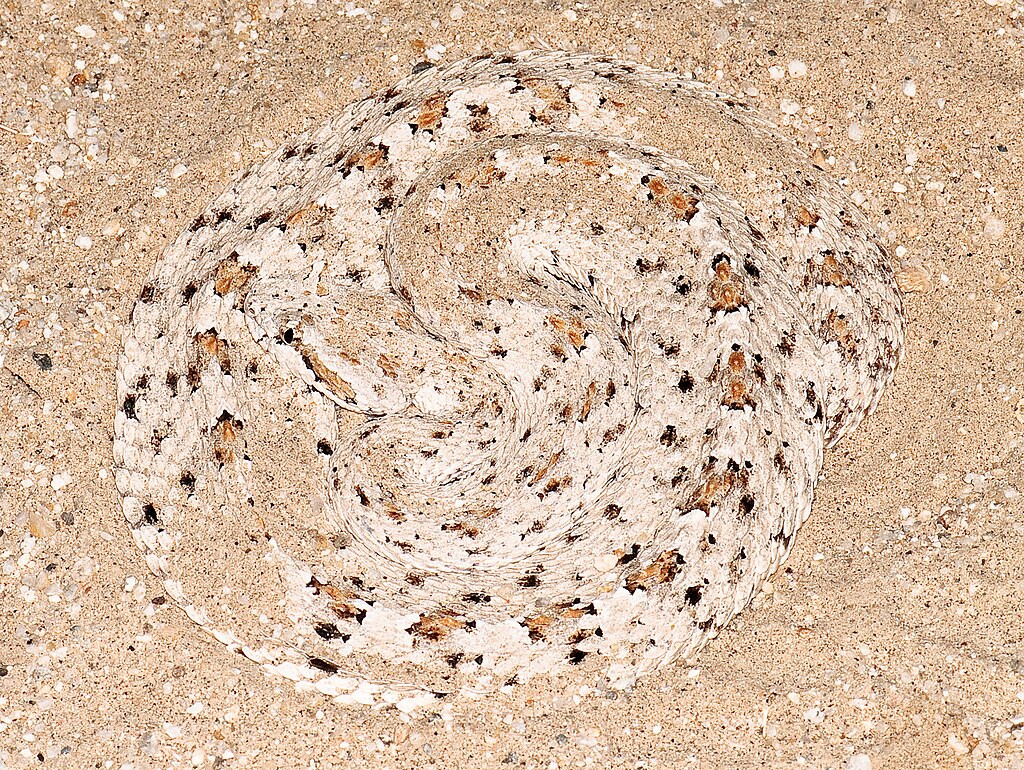
While sidewinding is perhaps their most famous adaptation, these snakes possess numerous other specialized features that enhance desert survival. Their raised, horn-like scales above each eye serve as a form of “eye shade,” protecting their vision from harsh sunlight and blowing sand during sandstorms. Sidewinders have evolved highly efficient kidneys that produce concentrated urine, allowing them to conserve precious water in their arid environment. Their scales feature microscopic textures that reduce friction with sand particles, enhancing their ability to move efficiently across desert surfaces. Additionally, sidewinders possess specialized respiratory adaptations that minimize water loss during breathing, including the ability to seal their nostrils during sandstorms and reduce their respiratory rate during extreme heat, demonstrating how comprehensively they’ve adapted to desert life beyond their famous sideways movement.
Reproduction and Life Cycle
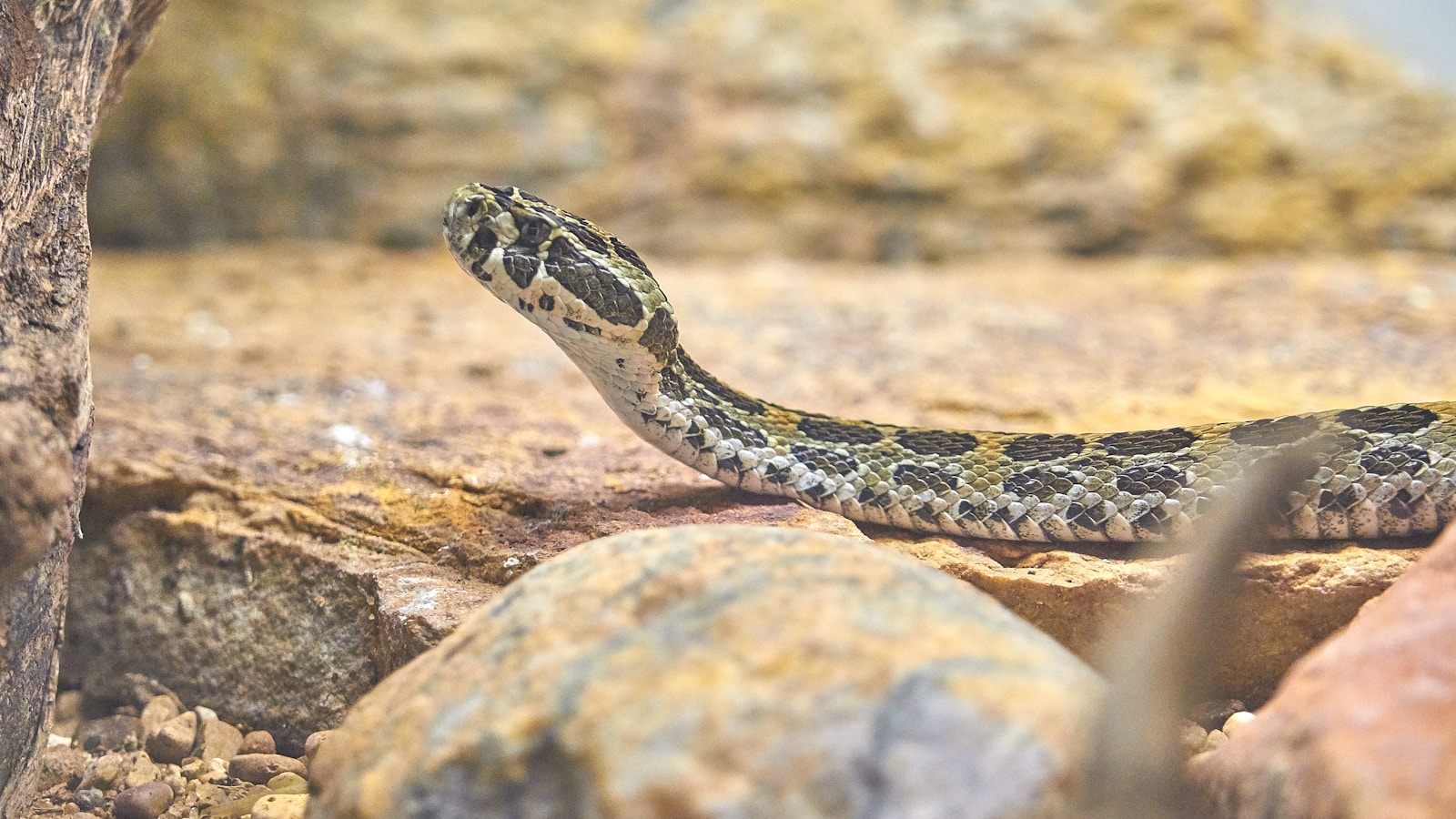
The reproductive biology of sidewinder rattlesnakes reflects adaptations to their harsh desert environment. Unlike many reptiles that lay eggs, sidewinders are ovoviviparous, meaning the females retain eggs within their bodies until the young are fully developed and ready to be born alive. Mating typically occurs in spring, with females giving birth to 5-18 young in late summer or early fall after a gestation period of about three to four months. Newborn sidewinders emerge fully equipped with functional venom glands and the innate ability to sidewind, requiring no parental care or instruction. The young measure about 6-8 inches at birth and must immediately fend for themselves in the challenging desert environment. Young sidewinders grow relatively quickly, reaching sexual maturity between 2-3 years of age, with individuals potentially living 15-20 years in the wild.
Conservation Status and Threats

Currently, sidewinder rattlesnakes maintain stable populations throughout much of their range and are listed as species of “Least Concern” on the IUCN Red List. However, they face increasing pressures from habitat loss due to urban development, agriculture, and solar energy installations across the American Southwest. Road mortality represents another significant threat, as these snakes often cross highways during nocturnal movements or when seeking mates. Climate change poses a potential long-term threat, as rising temperatures and changing precipitation patterns may alter the delicate desert ecosystems upon which sidewinders depend. Additionally, collection for the exotic pet trade, though regulated, continues to remove individuals from wild populations, while persecution by humans who fear rattlesnakes further impacts local populations in developed areas.
Sidewinders in Cultural Context
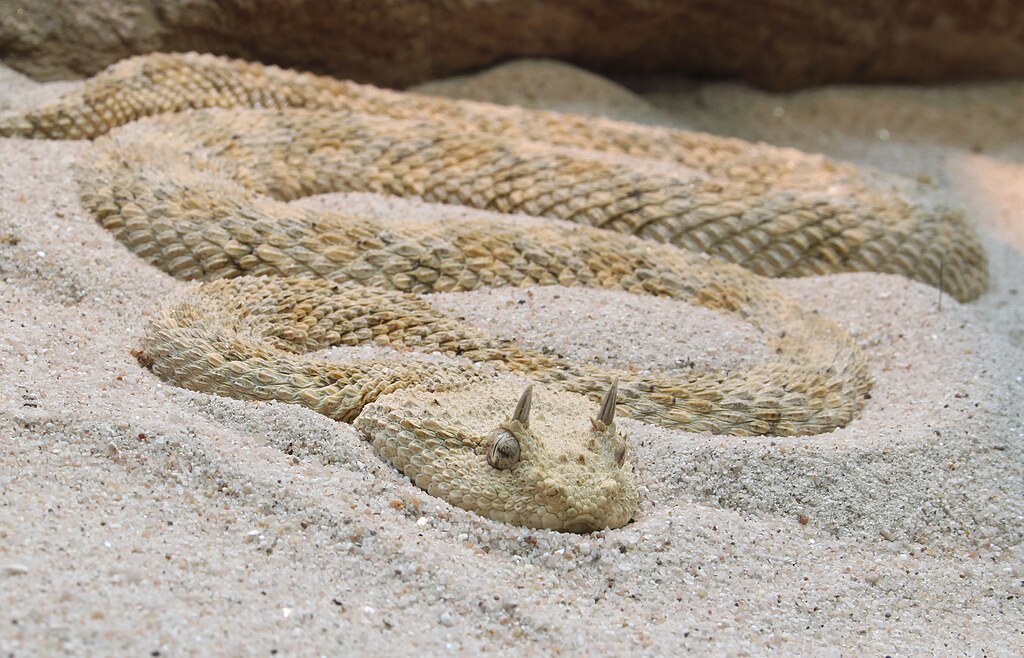
The sidewinder has slithered its way into American cultural consciousness, becoming an iconic symbol of the desert Southwest. The term “sidewinder” has entered common language to describe someone who is sneaky or underhanded, reflecting the snake’s stealthy approach and unexpected movement pattern. In Western films and literature, the sidewinder often symbolizes the dangers of the untamed desert. Various military weapons and vehicles have adopted the “Sidewinder” name, most notably the AIM-9 Sidewinder air-to-air missile, named for the snake’s ability to track heat signatures and its distinctive side-to-side motion when launched. Native American cultures of the Southwest, including the Hopi and Navajo, incorporated sidewinders into their traditional stories and art, often portraying them as clever tricksters or symbols of transformation.
Scientific Studies and Biomimicry Applications
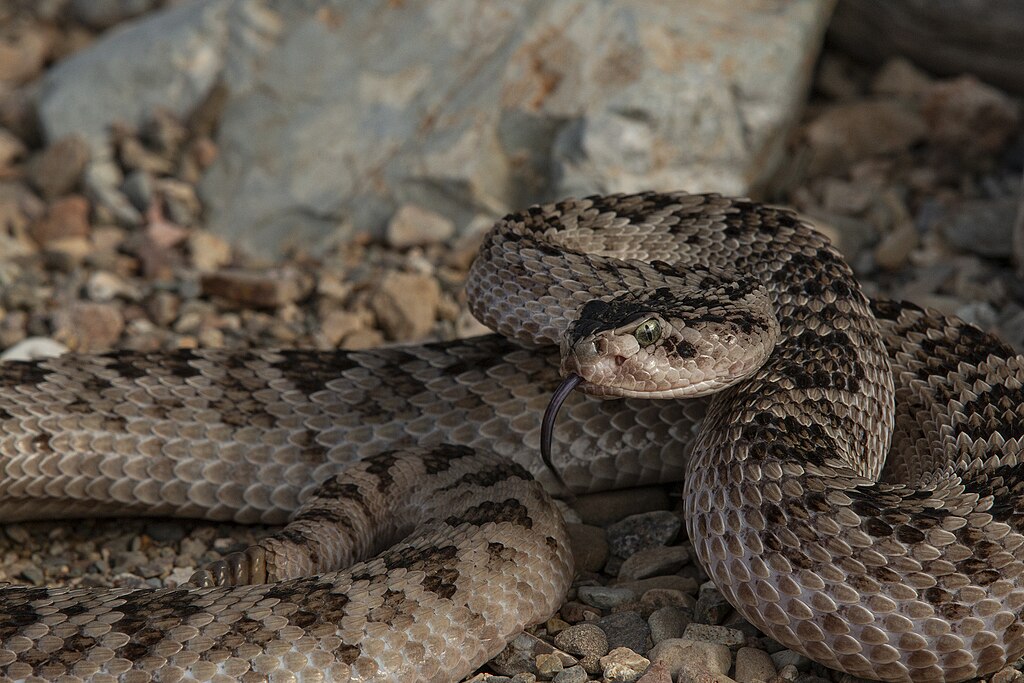
The sidewinder’s unique locomotion has fascinated scientists for decades, becoming the subject of numerous biomechanical studies aimed at understanding how this movement works. Researchers using high-speed cameras and force plates have mapped the precise sequence of muscle contractions and body positions that enable efficient sidewinding. These studies have inspired robotic engineers to develop snake-inspired robots that can navigate challenging terrains like loose sand, disaster rubble, or even the surface of Mars where traditional wheeled vehicles might struggle. The “Scalybot” developed by Georgia Tech researchers directly mimics sidewinder movement patterns to traverse sandy terrain, while NASA has explored similar designs for potential planetary exploration. Medical researchers have also studied sidewinder movement patterns to develop new designs for minimally invasive surgical tools that can navigate through the human body with snake-like precision.
Observing Sidewinders in the Wild

For wildlife enthusiasts hoping to observe sidewinders in their natural habitat, several desert parks and preserves across the American Southwest offer opportunities for responsible viewing. The Mojave National Preserve in California, Joshua Tree National Park, and Saguaro National Park in Arizona are all known habitats where patient observers might spot these fascinating reptiles. The best viewing times are during early evening hours as temperatures begin to cool, when sidewinders emerge from their daytime shelters. Wildlife viewing should always be conducted from a safe distance using binoculars or telephoto lenses, as sidewinders are venomous and deserve respectful space. Organized night tours led by experienced naturalists offer the safest and most educational opportunities to observe these remarkable snakes performing their distinctive sidewinding locomotion across the desert sands.
Living Alongside Sidewinders
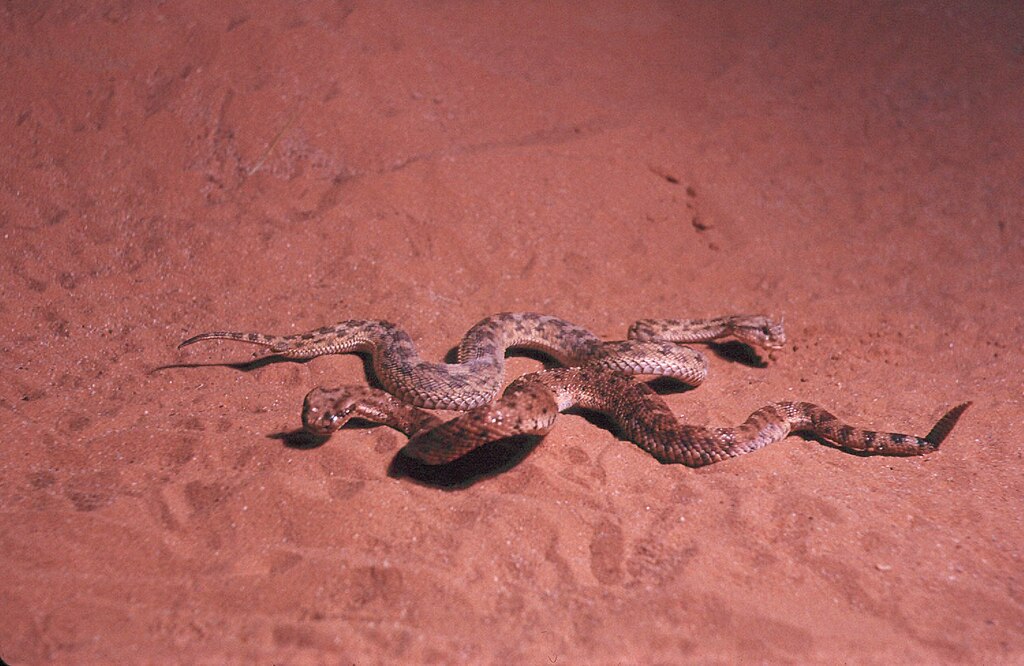
For residents of areas where sidewinders naturally occur, coexistence is both possible and preferable to conflict. Simple precautions can prevent dangerous encounters, such as wearing closed shoes and using a flashlight when walking outdoors at night during warm months. Homeowners can reduce the likelihood of attracting sidewinders by eliminating rodent populations around homes and removing ground-level hiding places like wood piles and dense vegetation adjacent to structures. If a sidewinder is encountered, the best approach is to simply give it space and allow it to move away undisturbed, as these snakes are not naturally aggressive toward humans unless cornered or threatened. Educational programs in southwestern communities have helped reduce fear-based killing of these important predators by highlighting their ecological value in controlling rodent populations and their general tendency to avoid human contact whenever possible.
The sidewinder rattlesnake stands as a remarkable example of evolutionary adaptation, with its distinctive sideways movement representing a perfect solution to the challenges of desert life. By minimizing contact with hot sand, maximizing locomotion efficiency, and enabling stealthy hunting, this unusual movement pattern demonstrates how natural selection can produce seemingly counterintuitive but highly effective solutions. As we continue studying these fascinating reptiles, they offer valuable lessons not only in biology and ecology but also in biomechanical engineering and robotics. The sidewinder reminds us that in nature’s vast laboratory, sometimes the most unusual approaches – like a snake that moves sideways like a crab – can be the most brilliant adaptations of all.

